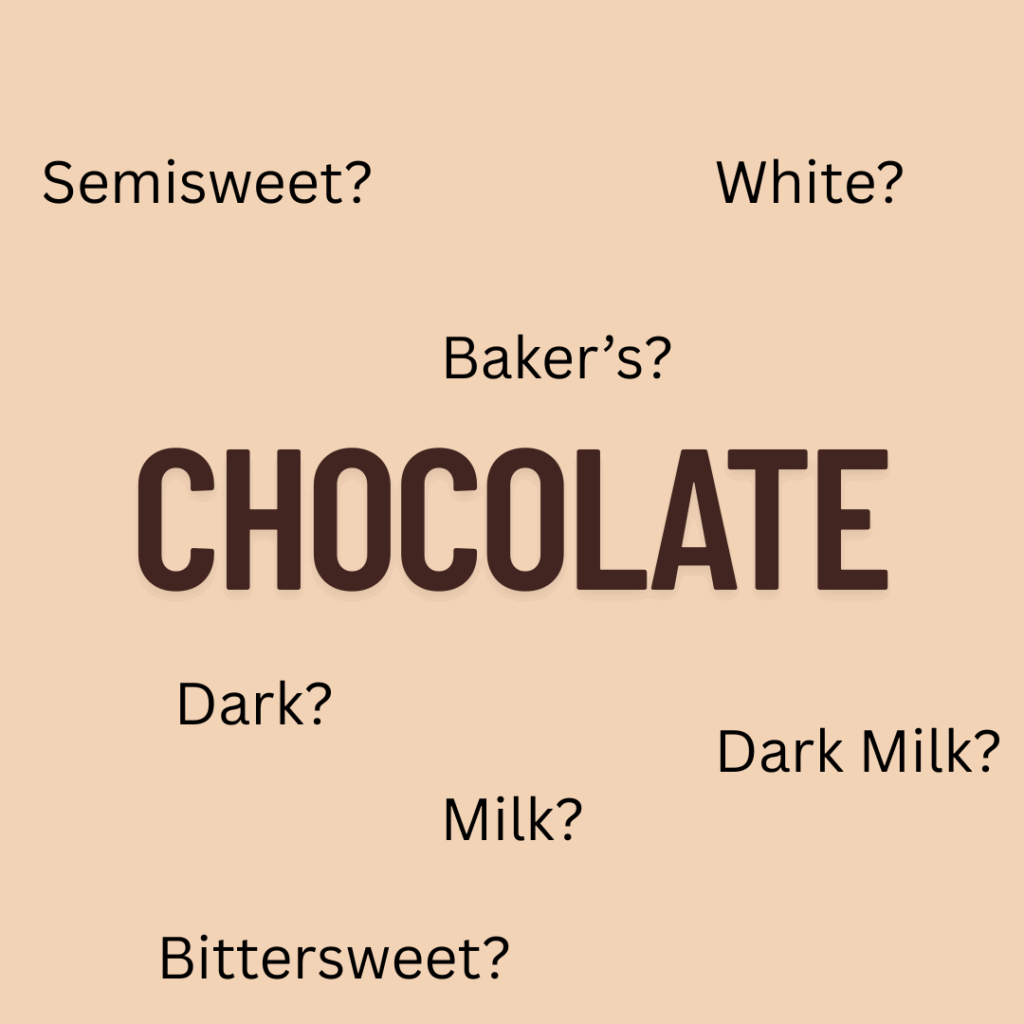If you go to the grocery store and look at their baking chocolate selection, you will find descriptions like semisweet, bittersweet, and unsweetened/bitter chocolate. A customer at a recent market noticed that we do not use this terminology and inquired about this. Instead, we identify if the chocolate bar is a milk chocolate, dark chocolate, or dark milk chocolate and then we identify the percentage of cacao in the bar. For example, if you look at our current offerings you will see that we offer a 50% milk chocolate bar, a 68% dark milk chocolate bar, and various 70% dark chocolate bars. The reason we do so is to be as transparent as possible about the ingredients of the chocolate you are buying. According to the USDA, “Semisweet chocolate or bittersweet chocolate is sweet chocolate that contains not less than 35 percent by weight of chocolate liquor” (https://www.ecfr.gov/current/title-21/chapter-I/subchapter-B/part-163/subpart-B/section-163.123). In other words, commercial manufactures can use the same terms to refer to the same chocolate. All you the customer know is that the chocolate product contains as little as 35% cacao. Traditionally, commodity chocolate manufactures use the terminology semisweet to refer to a chocolate with more sugar in it than their bittersweet chocolate product, but most commodity chocolate manufactures do not advertise the percentage of cacao. Your only clue often is the order the ingredients are listed as they are required to be listed in order of greatest to lest concentration. Often sugar is the first and main ingredient as it is a cheap filler. Unsweetened or bitter chocolate is often sold as “baker’s chocolate” and contains no sugar.

